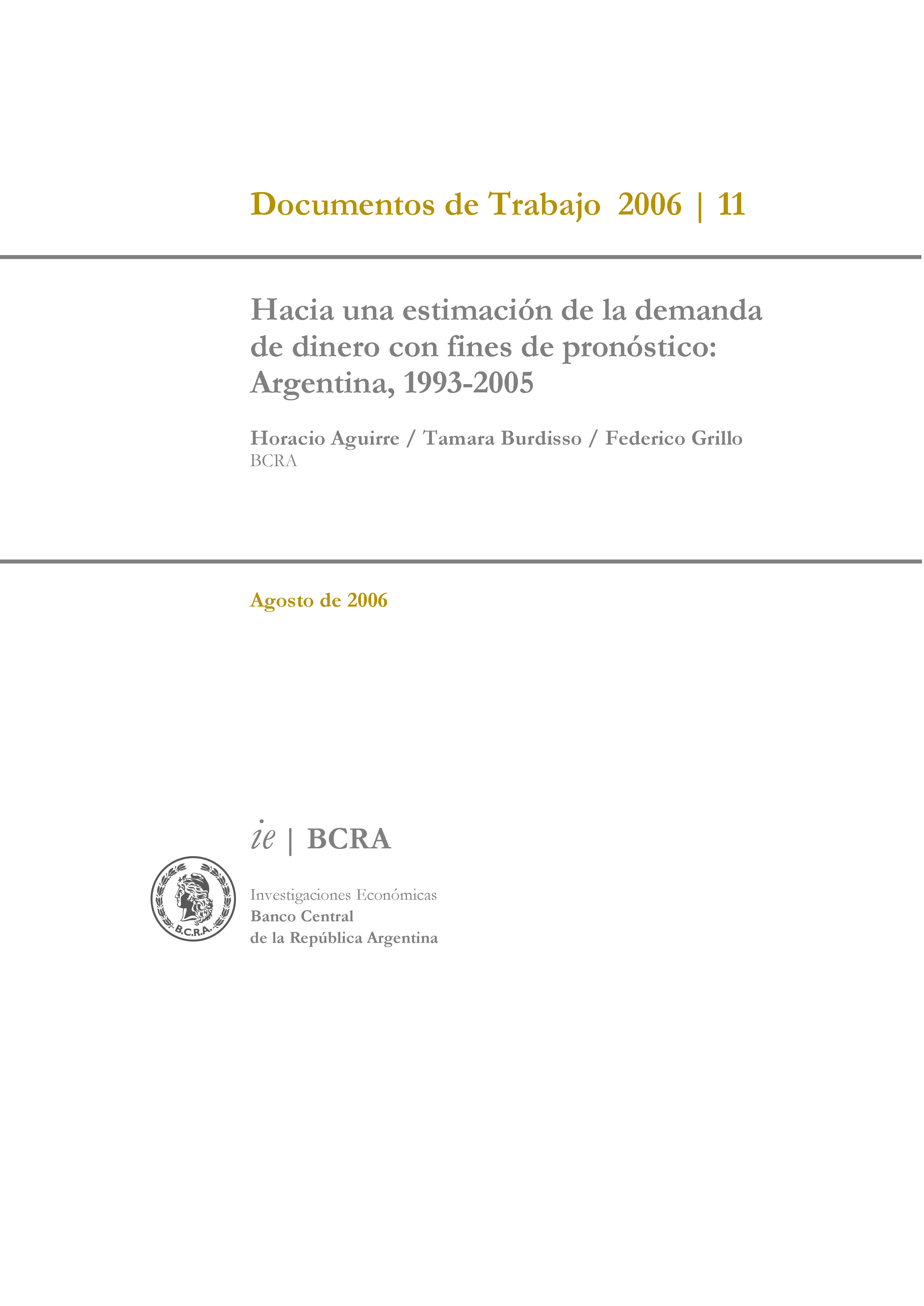Towards an Estimation of Money Demand with Forecasting Purposes
Working papers | 2006 | N 11
Keywords:
Monetary aggregates, Money demand forecast, Monetary policy, ArgentinaAbstract
This paper aims at producing forecasts of monetary aggregates which are useful in formulating monetary policy in Argentina; in particular, forecasts that allow evaluation of alternative economic scenarios, with a 5-quarter horizon and of both public and private monetary aggregates. With that aim, relationships between different aggregates –currency, M1*, M2*, M3*– and two of their determinants (GDP and interest rates) are estimated. The period selected (1993-2005) spans two different macroeconomic regimes, something problematic when analyzing long-run relationships: coefficients differ from those suggested by economic theory; and cointegration relationships are not stationary. In contrast, short-term models are estimated that exhibit acceptable goodness-of-fit, and evidence of stable parameters. In-sample forecasts do not display errors significantly different from zero, and observations between 2004:III and 2005:III are included within one-standard deviation confidence intervals. Additionally, forecast unbiasedness is obtained. Thus, models show good forecast capacity. However, taking into account the Central Bank's aims and constraints, more demanding criteria should be applied: although forecast errors are not significant, they turn more persistent as the forecast horizon is extended; and they currently seem to indicate underestimation of narrow aggregates and overestimation of broad ones. Such behaviour may be related to more “cash-intensive” money holdings after the crisis. An adjustment to forecasts is proposed in order to deal with this problem. The models obtained can be used to evaluate whether a given monetary target is consistent with a certain macroeconomic scenario, using as inputs variables whose forecasts can be obtained from models developed at BCRA.
Clasificación JEL: E41, E47


